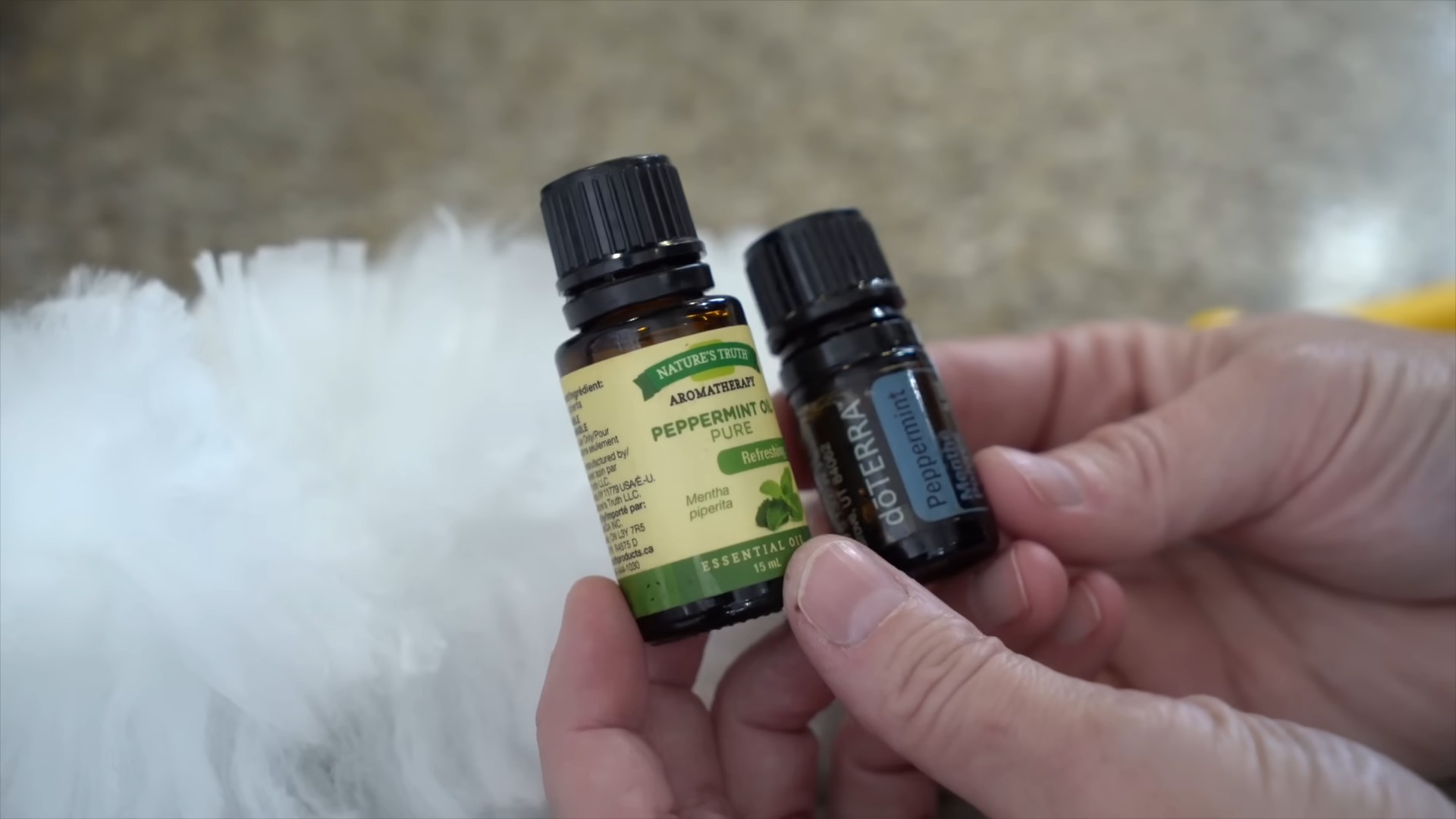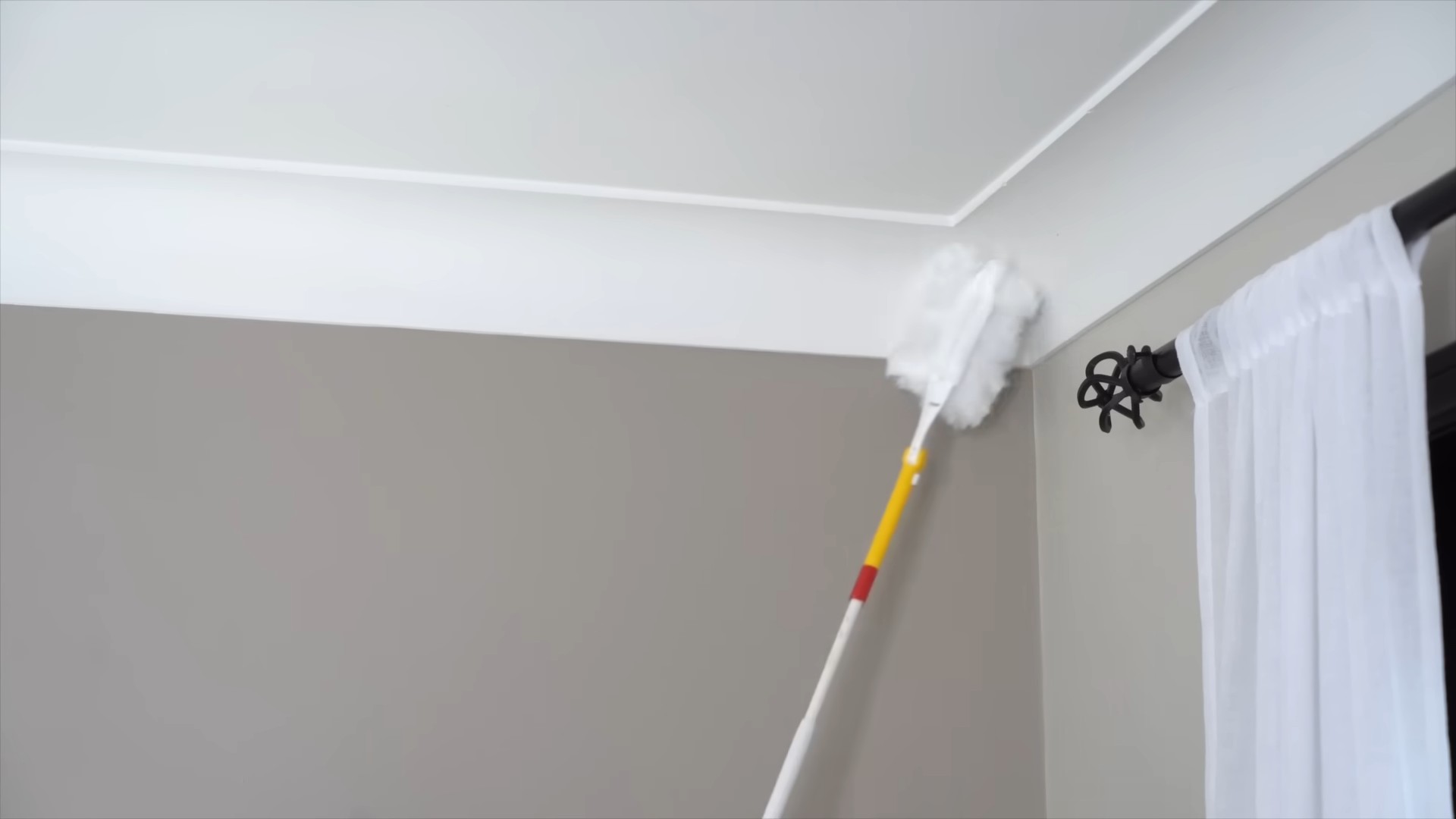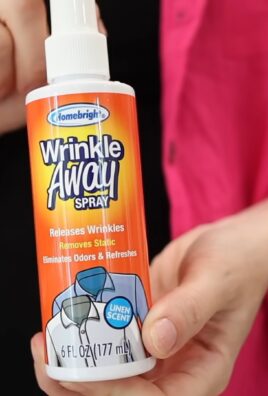Peppermint oil bug repellent: your secret weapon for a thriving, pest-free garden! Are you tired of sharing your precious tomatoes and leafy greens with unwanted creepy crawlies? I know I am! It’s incredibly frustrating to nurture your plants, only to find them riddled with holes or completely devoured by pests. But what if I told you there’s a simple, natural, and incredibly effective solution that you can whip up in your own kitchen?
For centuries, cultures around the world have recognized the potent properties of peppermint. From ancient Egyptians using it for medicinal purposes to traditional herbalists employing it as a natural insect deterrent, peppermint has a rich history of keeping pests at bay. And now, you can harness that power for your own garden!
This DIY peppermint oil bug repellent is a game-changer for any home gardener. Not only is it a safer alternative to harsh chemical pesticides, but it’s also incredibly cost-effective and easy to make. Imagine enjoying your homegrown produce without worrying about harmful residues or damaging the environment. Plus, the refreshing scent of peppermint will make your garden a more pleasant place to be! I’m going to show you how to create this simple solution and reclaim your garden from those pesky invaders, so you can finally enjoy the fruits (and vegetables!) of your labor.

DIY Peppermint Oil Bug Repellent: Keep Pests Away Naturally!
Hey there, fellow DIY enthusiasts! Are you tired of those pesky bugs invading your personal space, especially during the warmer months? And are you also wary of using harsh chemicals to keep them at bay? Well, you’ve come to the right place! I’m going to share my favorite, all-natural, and super effective DIY peppermint oil bug repellent. It’s easy to make, smells fantastic, and really works!
Why Peppermint Oil?
Before we dive into the recipe, let’s talk about why peppermint oil is such a great choice for a bug repellent. Peppermint oil contains menthol, a compound that many insects find incredibly irritating. It disrupts their sensory receptors, making it difficult for them to navigate and find food. Plus, it’s a much safer alternative to DEET and other synthetic insecticides, especially if you have kids or pets.
What Bugs Does Peppermint Oil Repel?
Peppermint oil is effective against a wide range of common household pests, including:
* Mosquitoes: A summer night’s worst enemy!
* Spiders: Keeps those creepy crawlies out of your corners.
* Ants: Prevents them from raiding your kitchen.
* Flies: Deters those annoying buzzing insects.
* Moths: Protects your clothes from damage.
* Fleas: A natural way to keep your pets comfortable.
* Ticks: Important for outdoor activities and preventing Lyme disease.
* Aphids: Great for protecting your garden plants.
* Mice: Yes, even rodents dislike the strong scent!
Gathering Your Supplies
Okay, let’s get started! Here’s what you’ll need to make your own peppermint oil bug repellent:
* Pure Peppermint Essential Oil: This is the star of the show! Make sure you’re using 100% pure peppermint essential oil for the best results. I recommend a high-quality brand for potency.
* Distilled Water: Using distilled water helps prevent bacterial growth and extends the shelf life of your repellent.
* Witch Hazel or Vodka (Optional): These act as emulsifiers, helping the oil and water mix better. Witch hazel is a gentler option, while vodka can help preserve the spray for longer.
* Liquid Castile Soap (Optional): Just a tiny bit of castile soap can also help emulsify the mixture and make it stick better to surfaces.
* Spray Bottle: A clean, dark-colored spray bottle is ideal. Dark bottles help protect the essential oil from light degradation. I prefer glass, but a sturdy plastic bottle will work too.
* Measuring Spoons or Droppers: For accurate measurements.
* Small Funnel (Optional): Makes pouring ingredients into the spray bottle easier.
Making Your Peppermint Oil Bug Repellent: Step-by-Step Instructions
Now for the fun part! Follow these steps to create your own effective and natural bug repellent:
1. Prepare Your Spray Bottle: Make sure your spray bottle is clean and dry. This will prevent contamination and ensure the repellent works effectively.
2. Add the Essential Oil: This is where the magic happens! The amount of peppermint oil you use will depend on the size of your spray bottle and the desired strength of the repellent. Here’s a general guideline:
* For an 8-ounce (240 ml) spray bottle: Use 15-20 drops of peppermint essential oil.
* For a 16-ounce (480 ml) spray bottle: Use 30-40 drops of peppermint essential oil.
I usually start with the lower end of the range and adjust as needed. Remember, you can always add more, but you can’t take it away!
3. Add Witch Hazel or Vodka (Optional): If you’re using witch hazel or vodka, add about 1-2 tablespoons to the spray bottle. This will help the peppermint oil disperse more evenly in the water.
4. Add Liquid Castile Soap (Optional): If you’re using liquid castile soap, add only a tiny amount – about 1/4 teaspoon. Too much soap can make the spray foamy and leave a residue.
5. Top Off with Distilled Water: Fill the rest of the spray bottle with distilled water, leaving a little space at the top.
6. Shake Well: This is crucial! Essential oils and water don’t naturally mix, so you need to shake the bottle vigorously for at least 30 seconds to combine the ingredients. Shake well before each use as well.
7. Test a Small Area: Before spraying liberally, test the repellent on a small, inconspicuous area of your skin or clothing to make sure you don’t have any adverse reactions.
Using Your Peppermint Oil Bug Repellent
Now that you’ve made your repellent, here’s how to use it effectively:
* For Personal Use: Spray the repellent on your skin and clothing, avoiding your eyes and mouth. Reapply every 2-3 hours, or more frequently if you’re sweating or swimming.
* For Indoor Use: Spray around doorways, windowsills, baseboards, and other areas where bugs might enter. You can also spray it on cotton balls and place them in drawers, closets, and other areas where you want to deter pests.
* For Outdoor Use: Spray around your patio, deck, or garden to keep bugs away. Be careful not to spray directly on plants, as the oil can be harmful to some species.
* For Pets: You can use a diluted version of the repellent on your pets to repel fleas and ticks. Mix a few drops of peppermint oil with a carrier oil like coconut oil or almond oil, and rub it onto your pet’s fur, avoiding their eyes and mouth. Always test a small area first to check for any allergic reactions. Consult with your veterinarian before using essential oils on your pets, especially cats, as they can be sensitive to certain oils.
Tips and Tricks for Maximum Effectiveness
Here are a few extra tips to help you get the most out of your peppermint oil bug repellent:
* Use High-Quality Essential Oil: The quality of your peppermint essential oil will directly impact the effectiveness of the repellent. Invest in a reputable brand that sells 100% pure essential oils.
* Store Properly: Store your repellent in a cool, dark place to protect the essential oil from light and heat degradation.
* Shake Before Each Use: As mentioned earlier, essential oils and water don’t mix well, so shake the bottle vigorously before each use to ensure the ingredients are properly combined.
* Reapply Frequently: The repellent will lose its effectiveness over time, so reapply it every few hours, especially if you’re sweating or swimming.
* Combine with Other Natural Repellents: For even greater protection, you can combine peppermint oil with other natural bug repellents, such as citronella, eucalyptus, lavender, or tea tree oil.
* Be Mindful of Allergies: While peppermint oil is generally safe, some people may be allergic to it. If you experience any skin irritation or other adverse reactions, discontinue use immediately.
* Avoid Contact with Eyes and Mouth: Peppermint oil can be irritating to the eyes and mouth, so avoid spraying it in these areas. If you accidentally get it in your eyes, rinse them thoroughly with water.
* Consider the Concentration: The concentration of peppermint oil in your repellent will affect its effectiveness. If you’re not getting the desired results, try increasing the amount of oil you use. However, be careful not to use too much, as it can be irritating to the skin.
* Patch Test is Key: Always perform a patch test on a small area of skin before applying the repellent to larger areas, especially if you have sensitive skin.
* Use on Clothing and Gear: Spraying your clothing, tents, and other outdoor gear can provide an extra layer of protection against bugs.
Troubleshooting
Sometimes, even with the best intentions, things might not go exactly as planned. Here are a few common issues you might encounter and how to fix them:
* Repellent Doesn’t Seem to Be Working:
* Possible Cause: Not enough peppermint oil, oil has degraded, or bugs are resistant.
* Solution: Increase the amount of peppermint oil, ensure your oil is fresh and stored properly, or try combining with other essential oils.
* Skin Irritation:
* Possible Cause: Too much peppermint oil, allergic reaction.
* Solution: Dilute the repellent further, discontinue use if irritation persists, and consult a doctor if necessary.
* Spray Bottle Clogged:
* Possible Cause: Soap residue or undissolved particles.
* Solution: Clean the spray bottle thoroughly with hot, soapy water. Strain the repellent through a coffee filter or

Conclusion
So, there you have it! Creating your own peppermint oil bug repellent is not only incredibly simple and cost-effective, but it’s also a fantastic way to ditch those harsh chemicals and embrace a more natural approach to pest control. We’ve walked you through the easy steps, highlighting just how quickly you can whip up a batch of this refreshing and effective spray.
Why is this DIY trick a must-try? Because it works! Peppermint oil is a powerhouse when it comes to deterring a wide range of pesky insects, from mosquitoes and ants to spiders and even rodents. Plus, unlike many commercial bug sprays that leave you smelling like a chemical factory, this homemade version leaves behind a pleasant, minty aroma. It’s a win-win!
But the beauty of DIY lies in its adaptability. Feel free to experiment with variations to find what works best for you and your environment. For example, if you’re dealing with particularly persistent mosquitoes, consider adding a few drops of citronella or eucalyptus oil to your blend. These essential oils are also known for their insect-repelling properties and can boost the overall effectiveness of your spray. You could also try adding a tablespoon of witch hazel to your mixture; it acts as a natural preservative and can help the oils and water emulsify better, preventing separation.
Another variation to consider is the carrier oil. While water works perfectly well for a quick and easy spray, using a carrier oil like almond oil or grapeseed oil can create a longer-lasting repellent, especially if you’re applying it directly to your skin. Just remember to do a patch test first to ensure you don’t have any sensitivities to the oil.
For those who prefer a more solid repellent, you can even create peppermint oil-infused cotton balls to place in drawers, closets, or other areas where pests tend to congregate. Simply soak cotton balls in a mixture of peppermint oil and water, and replace them every few weeks as the scent fades.
Ultimately, the best way to discover the full potential of this DIY peppermint oil bug repellent is to try it yourself. We’re confident that you’ll be amazed by its effectiveness and simplicity. So, gather your ingredients, follow the steps, and prepare to enjoy a bug-free environment without the harsh chemicals.
We’re eager to hear about your experiences! Did you find this recipe helpful? Did you experiment with any variations? Share your tips, tricks, and success stories in the comments below. Your feedback will not only help other readers but also contribute to a community of natural pest control enthusiasts. Let’s work together to create a safer, healthier, and more enjoyable environment for ourselves and our families, one spray of peppermint oil at a time! Don’t forget to share this article with your friends and family who are also looking for a natural and effective way to keep bugs at bay. The more people who embrace this simple DIY solution, the better!
FAQ
Frequently Asked Questions About Peppermint Oil Bug Repellent
Q: Is peppermint oil bug repellent safe for pets and children?
A: While peppermint oil is generally considered safe, it’s important to exercise caution when using it around pets and children. For pets, especially cats, peppermint oil can be toxic if ingested in large quantities or applied directly to their skin. It’s best to avoid spraying it directly on them and to ensure they don’t have access to areas where it has been heavily applied. For children, dilute the peppermint oil significantly and avoid spraying it near their face or allowing them to ingest it. Always supervise children when using any essential oil-based product. If you have any concerns, consult with your veterinarian or pediatrician.
Q: How often should I reapply the peppermint oil bug repellent?
A: The frequency of reapplication depends on several factors, including the weather, the level of insect activity, and whether you’re using a water-based or oil-based spray. Generally, you should reapply the spray every 2-3 hours, or more frequently if you’re sweating heavily or exposed to water. If you’re using an oil-based spray, it may last longer, but it’s still a good idea to reapply it every few hours for optimal protection. For indoor use, you may only need to reapply the spray every few days or weeks, depending on the level of insect activity.
Q: Can I use peppermint extract instead of peppermint essential oil?
A: While peppermint extract contains peppermint, it’s not as concentrated as peppermint essential oil and therefore won’t be as effective as a bug repellent. Peppermint essential oil contains a much higher concentration of the active compounds that deter insects. If you only have peppermint extract on hand, you can try using it, but you’ll likely need to use a much larger quantity and reapply it more frequently. For best results, stick with peppermint essential oil.
Q: What other essential oils can I combine with peppermint oil for a more effective bug repellent?
A: Peppermint oil works well on its own, but combining it with other insect-repelling essential oils can create a more potent and versatile repellent. Some excellent options include:
* Citronella oil: Known for its strong mosquito-repelling properties.
* Eucalyptus oil: Effective against mosquitoes, ticks, and other biting insects.
* Lavender oil: Repels moths, fleas, flies, and mosquitoes.
* Tea tree oil: Has antiseptic and insecticidal properties.
* Lemongrass oil: A natural mosquito repellent.
* Cedarwood oil: Repels moths, mosquitoes, and other insects.
Experiment with different combinations to find what works best for you and the specific pests you’re dealing with.
Q: How should I store my homemade peppermint oil bug repellent?
A: Store your peppermint oil bug repellent in a dark glass bottle in a cool, dry place. Dark glass helps protect the essential oils from light degradation, which can reduce their effectiveness. Avoid storing the repellent in plastic bottles, as the essential oils can break down the plastic over time. Make sure the bottle is tightly sealed to prevent evaporation. When stored properly, your homemade bug repellent should last for several months.
Q: Can I use this peppermint oil bug repellent on my plants?
A: Yes, you can use a diluted peppermint oil spray on your plants to deter certain pests, such as aphids and spider mites. However, it’s important to test the spray on a small area of the plant first to ensure it doesn’t cause any damage. Use a very diluted solution (a few drops of peppermint oil per cup of water) and avoid spraying the plants during the hottest part of the day.
Q: Is peppermint oil bug repellent effective against all types of bugs?
A: While peppermint oil is effective against a wide range of insects, it may not be equally effective against all types of bugs. It’s particularly effective against mosquitoes, ants, spiders, fleas, and moths. However, it may not be as effective against certain types of beetles or other hard-bodied insects. If you’re dealing with a specific type of pest, you may need to combine peppermint oil with other essential oils or pest control methods for optimal results.
Q: I have sensitive skin. Can I still use peppermint oil bug repellent?
A: If you have sensitive skin, it’s important to dilute the peppermint oil significantly and do a patch test before applying it to a larger area of your body. Mix a small amount of the diluted spray and apply it to a small area of skin, such as your inner arm. Wait 24 hours to see if you experience any irritation or allergic reaction. If you do, discontinue use. You can also try using a carrier oil like almond oil or grapeseed oil to further dilute the peppermint oil and reduce the risk of irritation.
Q: My peppermint oil bug repellent seems to separate. Is this normal?
A: Yes, it’s normal for the oil and water to separate in a homemade peppermint oil bug repellent. This is because oil and water don’t naturally mix. To prevent separation, shake the bottle vigorously before each use to ensure the ingredients are properly combined. You can also add a small amount of witch hazel or a natural emulsifier to help the oil and water stay mixed for longer.




Leave a Comment